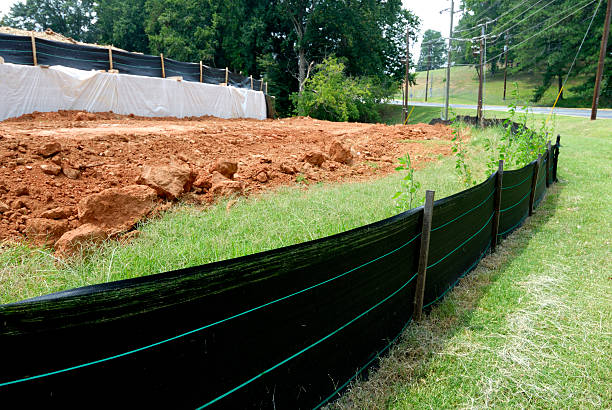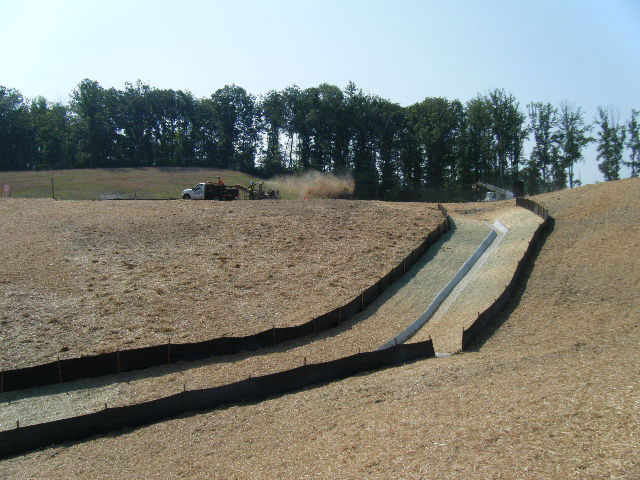Memphis Erosion Control Solutions Memphis TN: Your Neighborhood Erosion Control Specialists
Wiki Article
Ideal Practices for Disintegration Control in Construction Projects
Are you functioning on a construction task and worried about disintegration control? In this short article, we will certainly direct you with the ideal techniques for stopping disintegration on your website. Memphis Erosion Control Solutions Memphis TN. Get ready to take on disintegration head-on and make certain the success of your construction project.5 Crucial Disintegration Control Methods

To successfully manage disintegration on your building website, you'll require to carry out important methods such as incline stablizing and debris control actions. Incline stabilization is critical in avoiding dirt erosion on steep inclines. An additional efficient strategy is the usage of erosion control blankets or mats, which are positioned on the incline and aid keep dirt particles while allowing plants to grow.
Effective Debris and Overflow Administration

You can successfully take care of sediment and overflow in your building project by applying proper disintegration control measures. Sediment and runoff management is critical to avoid erosion and shield the surrounding setting. One reliable step is the installation of silt fencings along the perimeter of the building and construction site. These fences assist to have debris and avoid it from entering close-by water bodies. Another vital practice is the application of disintegration control blankets or mats. These blankets offer a protective layer on bare dirt, minimizing the influence of rains and preventing erosion. Furthermore, the usage of sediment containers or debris traps can assist to catch debris and stop it from entering stormwater systems. Normal upkeep of these procedures is essential to guarantee their performance throughout the building project. This includes cleansing and inspecting sediment containers and routinely changing silt fencings and disintegration control coverings as required. By carrying out these erosion control steps, you can successfully take care of sediment and runoff in your building and construction project, minimizing the effect on the environment and conforming with governing requirements.
Key Considerations for Slope Stablizing
You need to very carefully check out the incline's attributes, such as its composition, drain, and angle patterns. Look for indications of erosion, such as subjected origins, splits, or slumping dirt.An additional option is to grow greenery on the incline, as the roots can assist anchor the dirt and control erosion. In addition, setting up erosion control blankets or floor coverings can give immediate defense check it out while plant life ends up being well-known.
It's vital to consistently check the maintained inclines to guarantee their effectiveness. Maintain an eye out for any type of indications of motion or disintegration, and take instant action if required. Routine upkeep, such as evaluating and repairing any type of broken procedures, is additionally important to ensure lasting security.
Ideal Practices for Plant Life and Dirt Protection
One efficient method to shield vegetation and dirt on inclines is by regularly inspecting for signs of disintegration and taking prompt action if essential. Beginning by inspecting the slope for any kind of indications of disintegration, such as subjected origins, bare soil patches, or sediment build-up at the base. Implement erosion control actions such as mounting disintegration this article control blankets, mulching, or even creating preserving wall surfaces if required.Carrying Out Appropriate Drainage Equipments
To properly apply correct water drainage systems, it's critical to think about the incline gradient and soil kind. Understanding these variables is essential when it comes to managing water circulation and avoiding erosion. The slope gradient plays a significant function in figuring out how water crosses the land. Steeper slopes can lead to much faster water circulation, increasing the threat of erosion and flooding. On the other hand, gentler slopes allow water to move much more slowly, minimizing disintegration capacity. By examining the incline gradient, you can create a reliable drain system that suits the natural water movement.Soil type also influences drain system layout. Various dirt types have differing levels of leaks in the structure, impacting just how water is taken in and drained. Sandy soils have a tendency to drain pipes faster due to their crude texture, while clay soils have a slower water drainage rate due to their compact nature. Comprehending the dirt type helps in choosing ideal water drainage techniques, such as making use of permeable materials or setting up French drains. Furthermore, thinking about the soil attributes helps prevent waterlogging, which can lead to inadequate plant growth and damages to frameworks.
Verdict
Finally, when it pertains to disintegration control in building and construction jobs, you need to adhere to these ideal techniques. Implement effective sediment and overflow management methods to avoid pollution. Think about slope stablizing approaches to ensure the security of the site. Safeguard plants and soil by utilizing suitable actions. Finally, develop correct water drainage systems to manage water flow. By adhering to these crucial practices, you can successfully regulate disintegration and make certain the success of your construction task.To successfully regulate disintegration on your building website, you'll require to apply important strategies such as incline stabilization and sediment control measures. Slope stablizing is critical in preventing soil disintegration on steep slopes. Another efficient technique is the usage of disintegration control blankets or mats, which are positioned on the slope look at this now and aid preserve dirt fragments while enabling plants to grow. Another choice is to grow plants on the slope, as the roots can help anchor the dirt and control disintegration. Implement disintegration control measures such as installing disintegration control blankets, mulching, or also building preserving walls if required.
Report this wiki page